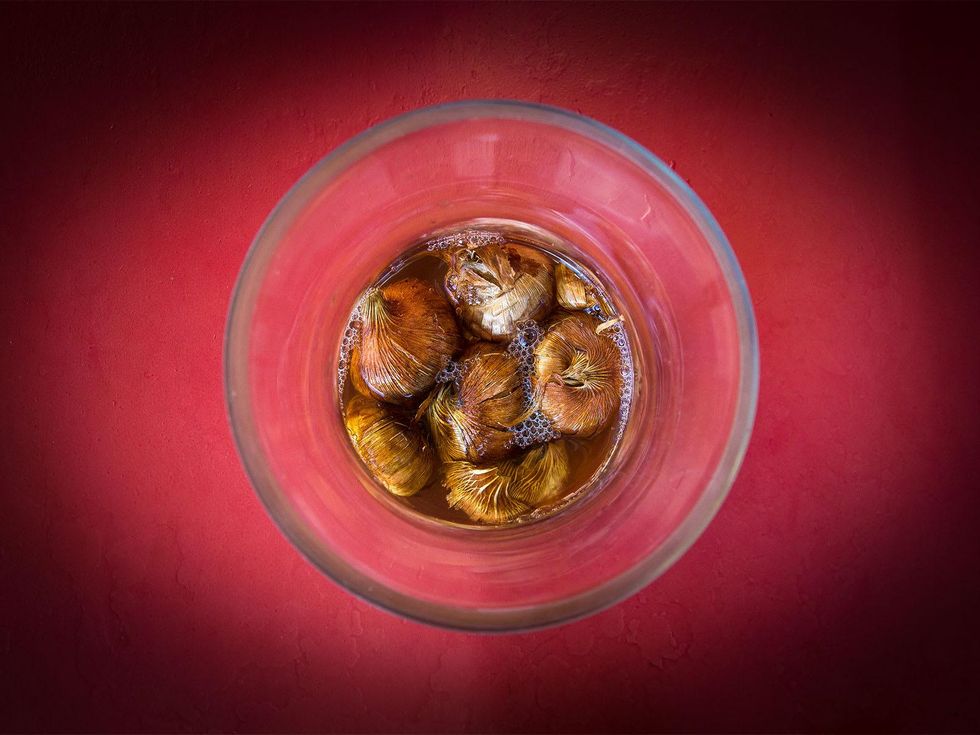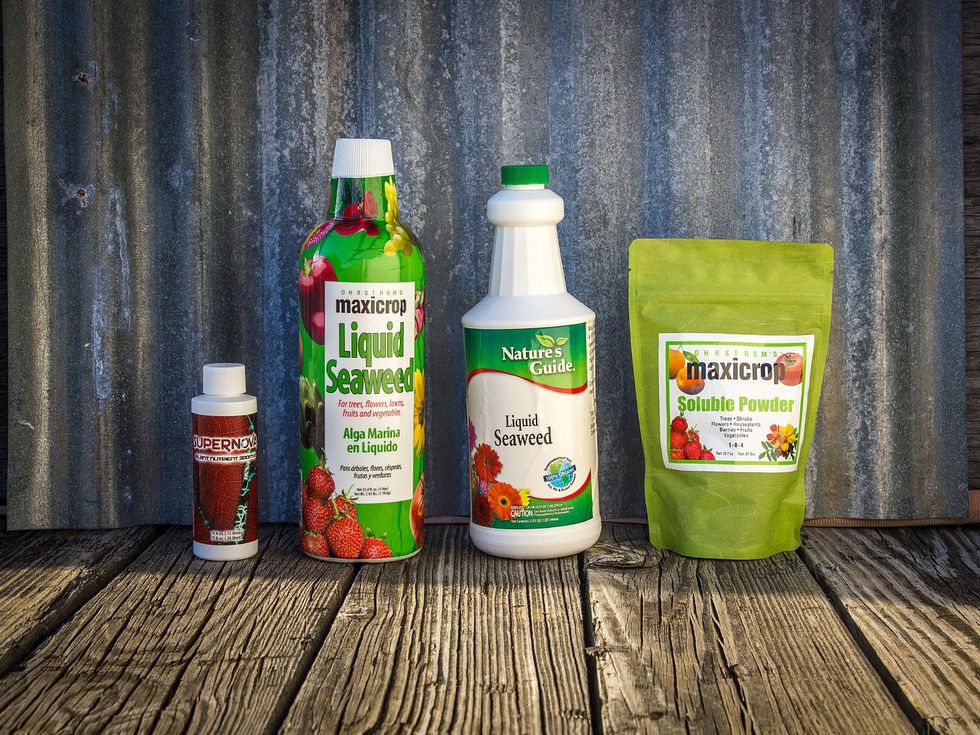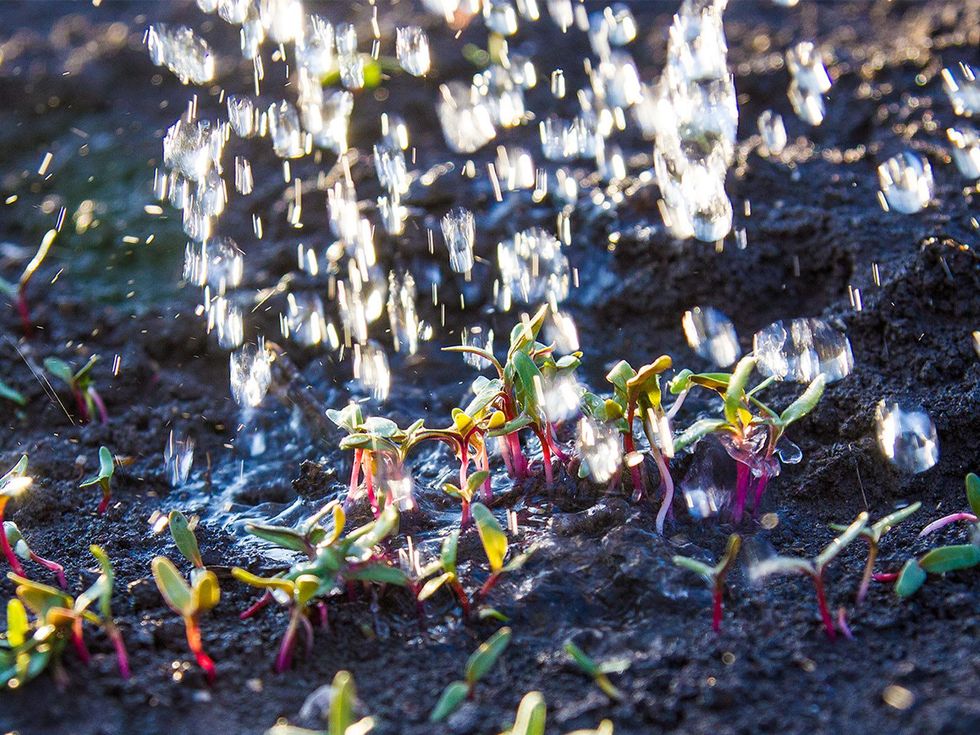The Farmer Diaries
Texas farmer salutes seaweed for its mysterious, magical benefits
If I look to the native trees for confirmation of when it's safe to plant my garden without fear of a late frost, I get a mixed message. Cedar elms on the land I farm have budded and are putting on leaves; they've apparently been triggered by seasonal changes to start their growth. Hackberries, on the other hand, are as bare as they were in the dead of winter, maybe because some triggers for frost-free weather have yet to fall into place.
I've resorted to looking at the extended weather forecast, which calls for warm days and mild evenings through the middle of April. If I put my confidence in the predictions of meteorologists, it is time to plant warm season crops despite the conflicting signals of the trees.
In the next few weeks, I'll plant okra, squash, zucchini and melons. I'll also transplant the peppers, tomatoes and eggplants I started in a greenhouse last January.
As I fill out the raised bed garden that will produce the bulk of the food I eat from late spring through the winter, I'll make good use of a product I was skeptical about when I first heard of the benefits it purportedly brings to crops: liquid seaweed. But after several years of using it, I'm confident in its ability to start off plants on a healthy footing.
Almost all seaweed products sold at garden centers contain a processed form of a species of seaweed that grows off the coast of Norway. The liquid in the bottle is dark brown, like a stout ale. Mixed with water at about the rate of one ounce of liquid seaweed per gallon of water, the blend looks like a glass of weak iced tea after the ice has melted.
The blend is either poured into the soil at a plant's root zone or sprayed in a fine mist onto a plant's leaves. With no notable N-P-K fertilizer rating, the benefits of liquid seaweed are supposed to come from its hormone content and trace minerals, with just a little nitrogen. Claims abound about how it aids the grower. But I can't substantiate them.
Seaweed as growth stimulant
Because seaweed can grow as much as a foot per day, it's obviously rich in the compounds that promote such rapid growth. Harvested and bottled, liquid seaweed is said to contain these compounds. If the claims regarding seaweed are true, watering an established plant with a blend of pure water and liquid seaweed, or misting the leaves of the plant with the blend, results in dense roots, lush foliage and increased fruit production.
Reduces transplant shock
Additionally, watering a transplanted plant with a blend of liquid seaweed and water helps the plant endure the shock of being removed from its container and placed into garden soil. We anthropomorphize plants and think of transplant shock as something a plant feels when its home is removed, taking time for the plant to get used to its new surroundings. In fact, when we subject a plant to a sudden change in environmental factors and expose its roots to the air, we make it vulnerable to pathogens that can hamper growth and even kill it.
Because the nutrients in liquid seaweed are absorbed quickly by a plant through not only its roots but also its leaves, liquid seaweed is thought to give plants a quick boost of energy, helping it to survive the disruption and ward off disease.
Mild nourishment for seedlings
When a seed sprouts, the seedling does not immediately need to take up nutrients through its roots because it has a pair of cotyledon, or seed leaves, that supply the young plant with food until its first true leaves have time to form. The seedling stage of a plant is delicate, and its tiny roots can be easily destroyed by concentrated nutrients, either from synthetic fertilizers or from animal manure that has not been fully composted.
Liquid seaweed has very small quantities of plant nutrients and trace elements, which give a small seedling just a little food. More important, it feeds the microbes in the soil that in turn excrete compounds that are perfect for plants to uptake at any stage of their growth.
How I use it
Seedlings. I use liquid seaweed on small seedlings that begin to turn yellow for whatever reason. Soon afterward, the green pops back into them, and I attribute this save to the seaweed. Just in case seaweed's hormones do indeed work on any plant to which they're applied, I add liquid seaweed to my watering can when I water sprouting Swiss chard, carrots, beans, melons and cucumbers — just about everything.
Soaking bulbs. I've read that soaking flower bulbs before planting them is unnecessary but can hasten their germination by a few days. Soaking them in a mild blend of water and liquid seaweed may trigger their germination and supply them with a little dose of nutrients to start them off healthier so they can grow more robust.
Soaking seeds. Most seed can be directly planted in the garden when it's time to sow. But some seeds benefit from an overnight soaking: Morning glories, Swiss chard, beets, pumpkins and other large seeds germinate faster with a pre-soak. Waterlogging a seed benefits it either by softening its tough exterior or by washing off the natural germination inhibitors that some plants produce.
Adding a little seaweed to the water, as with flower bulbs, also doses a touch of nutrients into the seed, giving it its best shot at growing success.
Bare root plants. The small bare-root trees, bushes and vines I buy online need to be soaked in water for a few hours before planting outside. To the water, I add liquid seaweed for additional benefits.
Hydroponics. I add liquid seaweed to the reservoirs that feed the kale, collard greens, lettuce and herbs that I grow in nothing but water and nutrients. It seems to give the plants a health boost; everything looks a little darker green the next day. I imagine that it helps supply whatever element may not be quite in balance from the synthetic blends I mix into the water. Or maybe it's supplying a helpful but nonessential trace element.
Although I feel that liquid seaweed products benefit plants, I'm reluctant to recite the claims as if they're scientifically proven. I can't say whether it's the plant hormones in seaweed triggering growth in my crops or the fact that the product has a few trace elements in it with a touch of nitrogen.
Either way, seaweed does green up my plants and feed small seedlings. I know it can feed plants because I've seen how it keeps seedlings grown in nutrient-less growing medium green and healthy. For this reason, I use seaweed often, in the garden, in the greenhouse and in my hydroponics setup. I find it worth the price of a bottle, and a little goes a long way.



